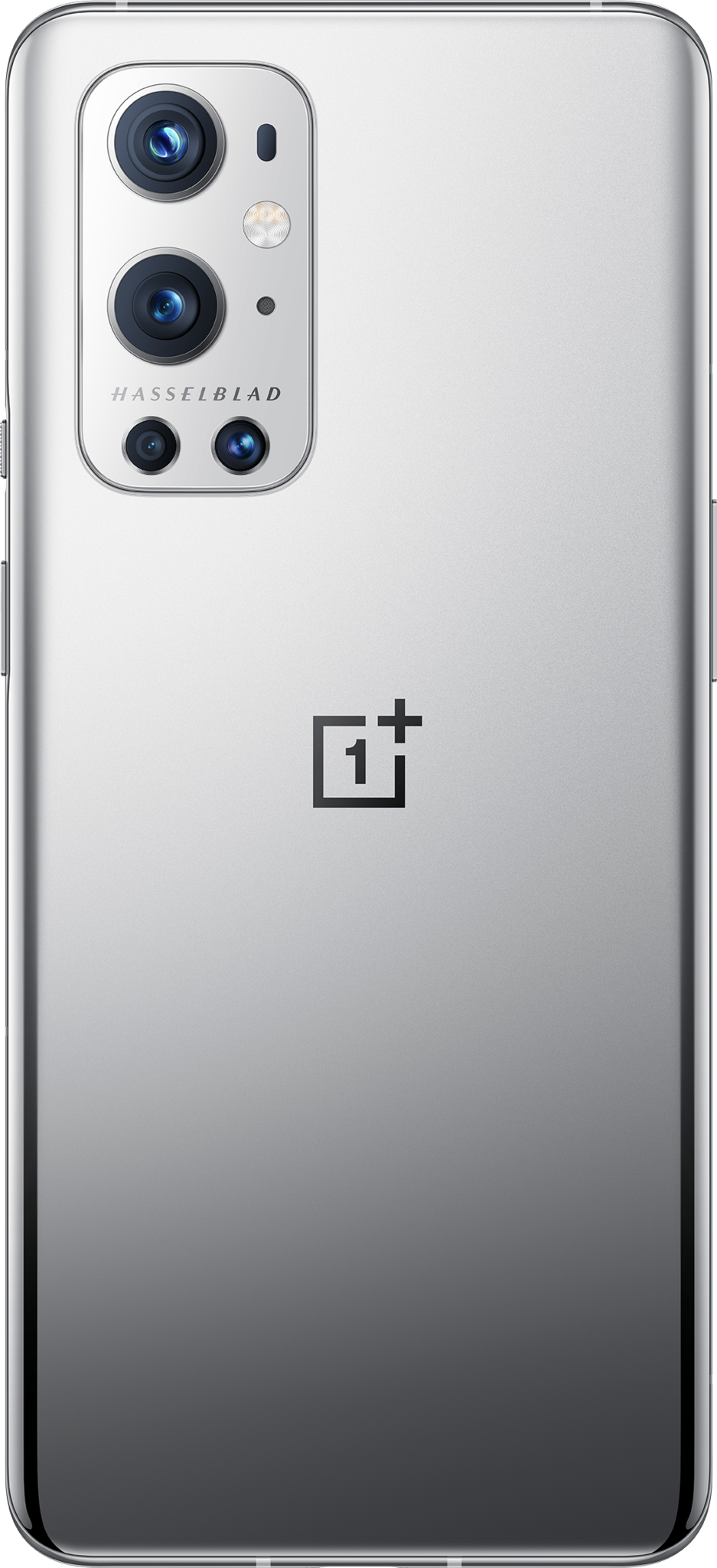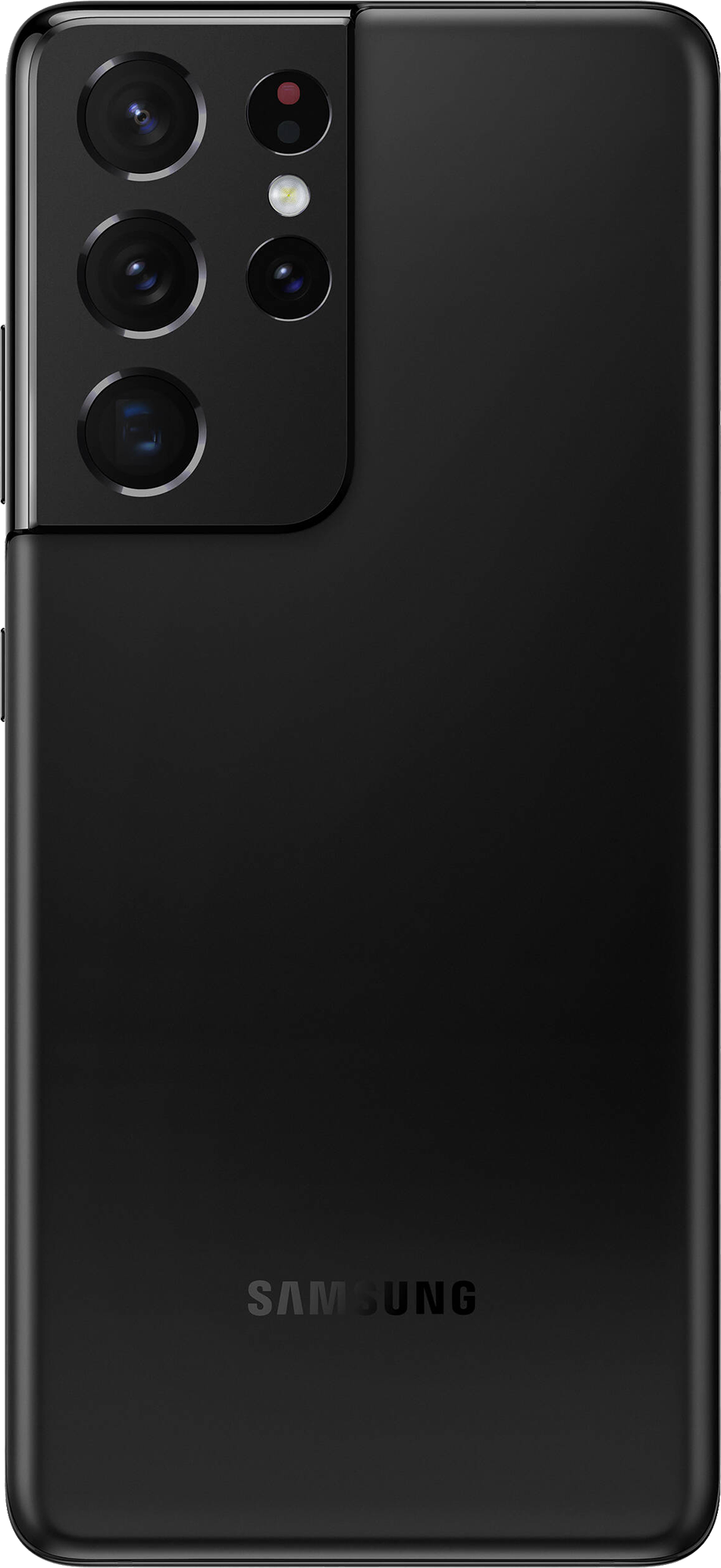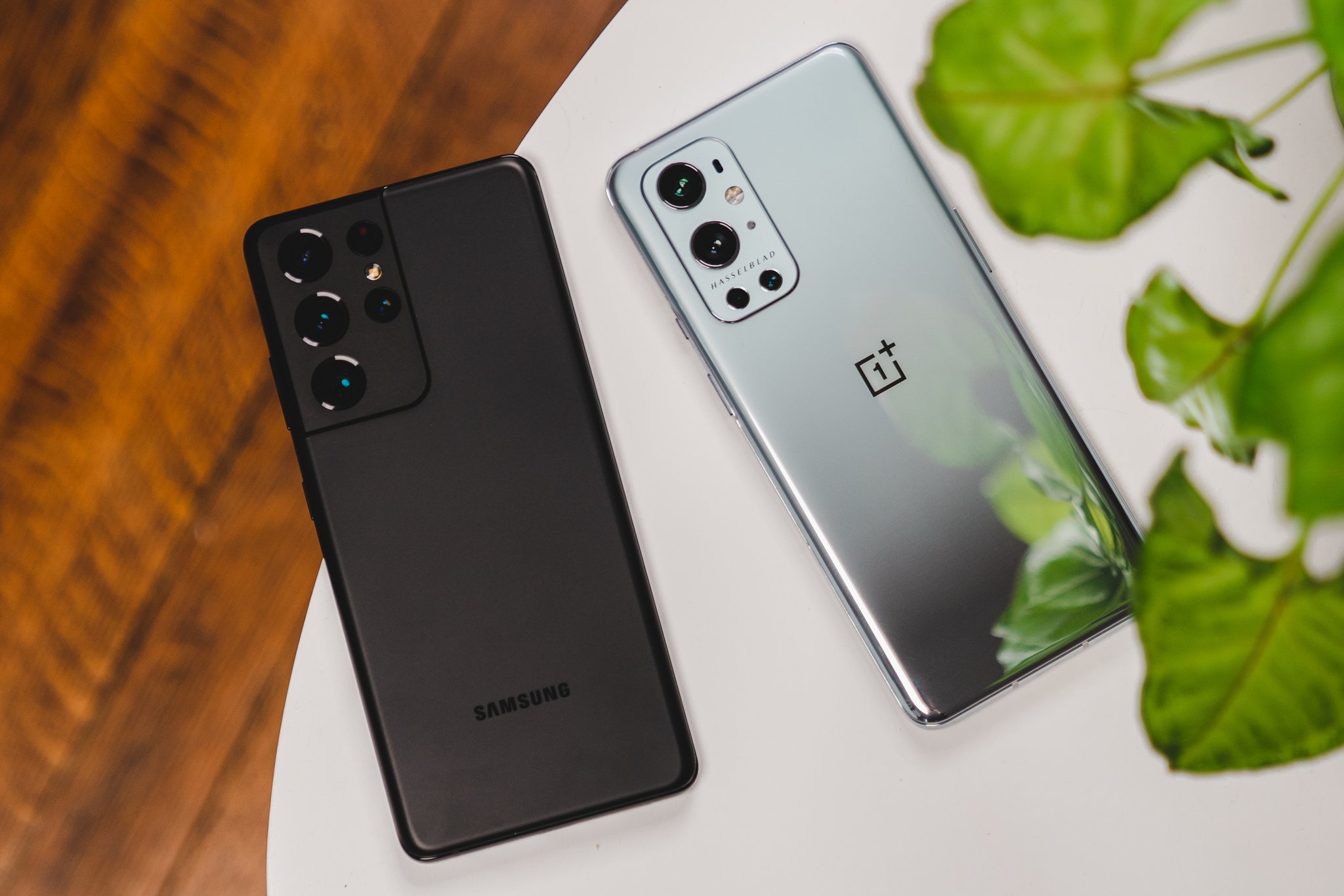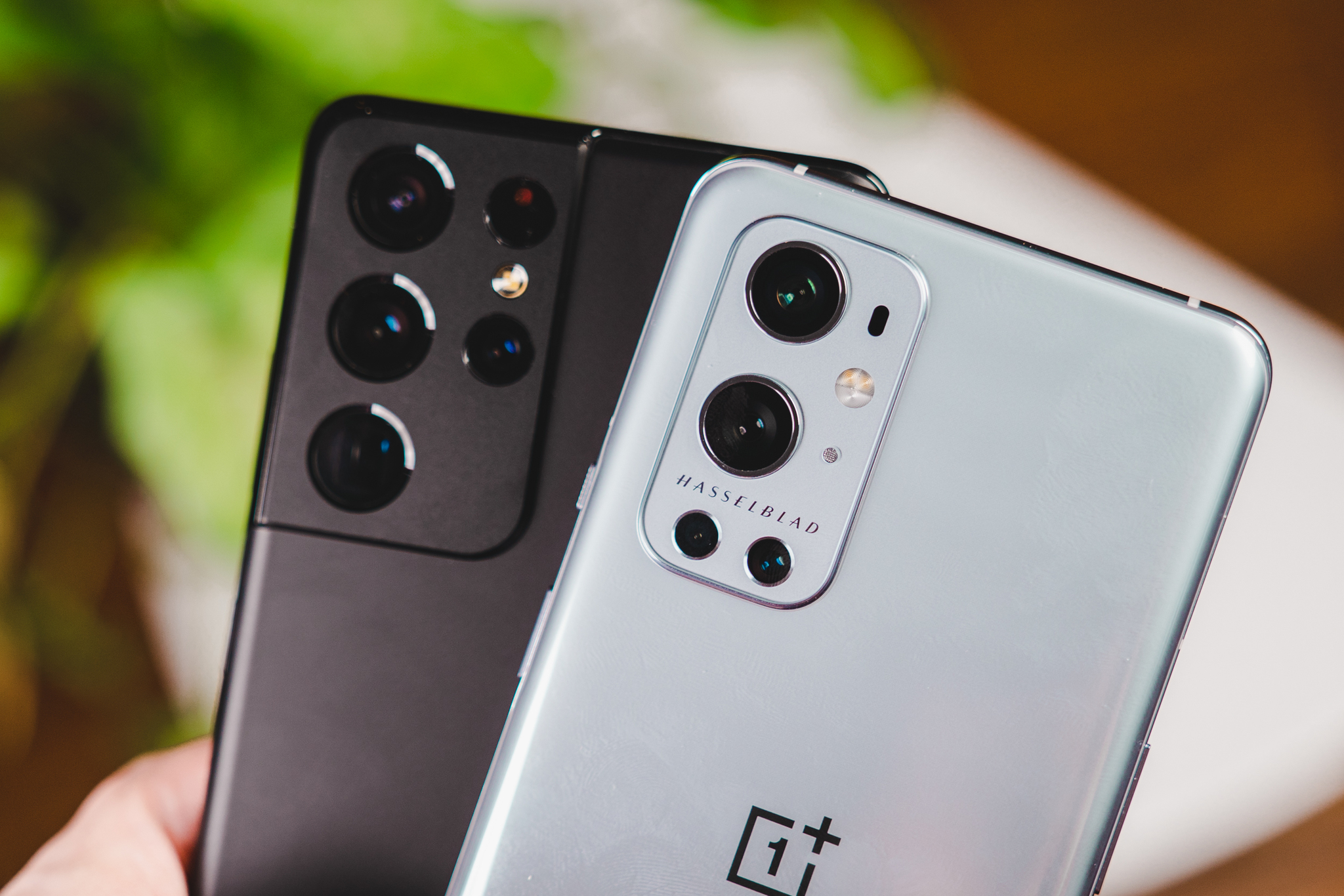Warp-charged
OnePlus 9 Pro
Pros
- 65W wired charging and 50W wireless charging
- Hasselblad-backed camera system
- Clean, customizable OxygenOS software
- Lower launch price
Cons
- 5G is limited to T-Mobile in the U.S.
- Smaller battery capacity
The OnePlus 9 Pro is the company's latest and greatest flagship offering, with incredibly fast charging and stellar cameras backed by the legendary Hasselblad. Its display is also stunning and can reach 1Hz to reduce power consumption.
Telephoto master
Samsung Galaxy S21 Ultra
$1,000 at Amazon $1,000 at Best Buy $1,000 at B&H
Pros
- Dual telephoto cameras with up to 100x zoom
- Pressure-sensitive S Pen support
- Higher storage and RAM options
- Wider availability with better 5G support
Cons
- Higher launching price
- Slower charging speeds
The Galaxy S21 Ultra can capture otherworldly telephoto shots, reaching all the way up to 100x at the tap of a button. It has incredibly powerful hardware, along with clean software, S Pen support, and years of continued updates.
Originally the self-proclaimed "flagship killer," OnePlus has gradually worked its way up to the big leagues, now making true bonafide flagship phones. The OnePlus 9 Pro is a few dollars shy of joining the four-figure club, putting it in direct competition with some of the best Android phones like the Galaxy S21 Ultra — which, though originally priced at $1,200, has ranged from $700 to $1,000 regularly. So which is the best option for the discerning shopper? That'll largely come down to your priorities in software, charging speeds, and camera tech.
Fully fledged flagships
OnePlus and Samsung are both well-acquainted with the process of making high-quality hardware, and both the OnePlus 9 Pro and Galaxy S21 Ultra are incredibly well-made. Each features a curved glass front and back, bridged by aluminum rails, though the OnePlus 9 Pro's halo Morning Mist colorway comes with a high-gloss coating, while its other color options match the S21's frosted matte finish.
65W wired charging fundamentally changes how you think about battery life.
Along with the excellent hardware builds, both sides are fairly evenly matched on paper. You'll get a Snapdragon 888 processor with each, as well as 128GB of baseline storage and IP68-certified water resistance. The S21 Ultra beats out the 9 Pro's starting RAM configuration at 12GB compared to 8GB and maxes out at a whopping 16GB. It also has a larger 5000mAh battery, though the OnePlus 9 Pro has a huge advantage in the form of its dramatically faster 65W wired charging, along with its jaw-dropping 50W wireless charging.
Those kinds of charging speeds fundamentally change the way you think about battery life on your phone; the S21 Ultra is by no means slow to charge, but in our review, the OnePlus 9 Pro was able to reach a full charge from a dead battery in just 29 minutes using the Warp Charge 65T charger. Despite relatively unremarkable (though still good) battery life from each phone, this is a huge win for the OnePlus 9 Pro.
| Category | OnePlus 9 Pro | Galaxy S21 Ultra |
|---|---|---|
| Operating System | OxygenOS 11, Android 11 | One UI 3.1, Android 11 |
| Display | 6.7 inches (3216x1440), 120Hz AMOLED | 6.8 inches (3200x1440), 120Hz AMOLED |
| Processor | Snapdragon 888 | Snapdragon 888 |
| Storage | 128G/256GB, 8/12GB RAM | 128/256/512GB, 12/16GB RAM |
| Rear Camera | 48MP, ƒ/1.8, 1.0μm (wide) 50MP, ƒ/2.2, 2.4μm (ultra-wide) 8MP, ƒ/2.4, 1.0μm (3x telephoto) 2MP (monochrome) |
108MP, ƒ/1.8, 0.8μm (wide) 12MP, ƒ/2.2, 1.4μm (ultra-wide) 10MP, ƒ/2.4, 1.22μm (3x telephoto) 10MP, ƒ/4.9, 1.22μm (10x telephoto) |
| Front Camera | 16MP, ƒ/2.4, 1.0μm (wide) | 40MP, ƒ/2.2, 0.7μm (wide) |
| Battery | 4500mAh, 65W wired, 50W wireless | 5000mAh, 25W wired, 15W wireless |
| Water Resistance | IP68 | IP68 |
| Dimensions | 163.2x73.6x8.7mm, 197g | 165.1x75.6x8.9mm, 229g |
| Colors | Morning Mist, Pine Green, Stellar Black | Phantom Black, Phantom Silver |
Software makes all the difference
Things start to even back out once you shift your focus to the software. Both OnePlus and Samsung offer custom software on top of Android 11, each with its own unique set of pros and cons. OnePlus's OxygenOS isn't quite the "vanilla Android" experience it used to be. However, it's still incredibly fluid and customizable, allowing users to adjust everything from system fonts and icons to accent colors and even the animation that plays when using the in-display fingerprint sensor. Similarly, Samsung's One UI 3.1 is a robust and feature-rich platform with plenty of add-ons like the Galaxy Apps store, powerful multi-window tools, and optimizations for easier one-handed use.
As for which ideation of Android is better ... well, that's entirely up to personal preference, of course. OnePlus and Samsung have built incredibly mature and refined software experiences, and you'll likely be happy with either — though you likely already know if you tend to lean towards a more "stock-like" build of Android or Samsung's particular approach. The good news with either is that performance is absolutely stellar, without a single sign of stutter or hesitation.
Both phones have outstanding camera systems, but the Galaxy S21 Ultra's dual telephoto lenses are tough to beat.
The displays on both phones are top-notch, as well. You'll get a large Quad HD+ panel with either, producing vibrant colors and getting more than bright enough for outdoor use. Both displays max out at a smooth 120Hz, but thanks to LTPO technology, each can drop down to a lower refresh rate when appropriate to reduce power consumption; the Galaxy S21 Ultra reaches an impressively low 10Hz, though the OnePlus 9 Pro can dip all the way down to 1Hz when displaying perfectly still images.
However, the Galaxy S21 Ultra's unique advantage is its display's support for the S Pen stylus. This is Samsung's first phone outside of the Note series to offer such support, allowing users to write or draw on-screen with 4,096 pressure sensitivity levels. You can also use the S Pen to open a list of shortcuts to your favorite apps and tools, or hover the S Pen over the display to gain more context for certain on-screen elements.
Telephoto vs. Hasselblad's legacy
One of the best parts of owning a flagship phone is the incredible cameras they brandish. Both the OnePlus 9 Pro and Galaxy S21 Ultra feature a quad-camera system. Though we'll have a full camera comparison soon (spoiler: they're both excellent), a few key differences immediately stand out. The S21 Ultra's highlight feature is its dual telephoto cameras, allowing it to reach 3x or 10x natively and punch in all the way up to 100x using digital zoom. Conversely, the OnePlus 9 Pro has a single 3x telephoto sensor.
The OnePlus 9 Pro's 2MP monochrome sensor is also largely unuseful, though the rest of its imaging is fantastic — thanks in large part to OnePlus's partnership with Hasselblad. As a result, color reproduction, dynamic range, and deficient light performance are significantly better than in years past. At the same time, Samsung has been a leader in imaging for years, and you should dismiss OnePlus's photography prowess this time around.
Ultimately, both phones are among the absolute best of the best; you're getting powerful hardware with each, along with outstanding cameras, stunning hardware, and clean, responsive software. With both phones roughly evenly priced, there are compelling reasons to pick up either one over the other — though if the Galaxy S21 Ultra eventually returns to its launch price of $1,200, the OnePlus 9 Pro may be an instant buy.
Warp-charged
OnePlus 9 Pro
Unbeatable charging speeds and clean, responsive software
The OnePlus 9 Pro is the company's latest and greatest flagship offering, with incredibly fast charging and stellar cameras backed by the legendary Hasselblad. The display is stunning, as well, and can reach 1Hz to reduce power consumption.
Telephoto master
Samsung Galaxy S21 Ultra
Shoot for the stars with 100x Space Zoom
$1,000 at Amazon $1,000 at Best Buy $1,000 at B&H
The Galaxy S21 Ultra can capture otherworldly telephoto shots, reaching all the way up to 100x at the tap of a button. It has incredibly powerful hardware, along with clean software, S Pen support, and years of continued updates.
Source: androidcentral



